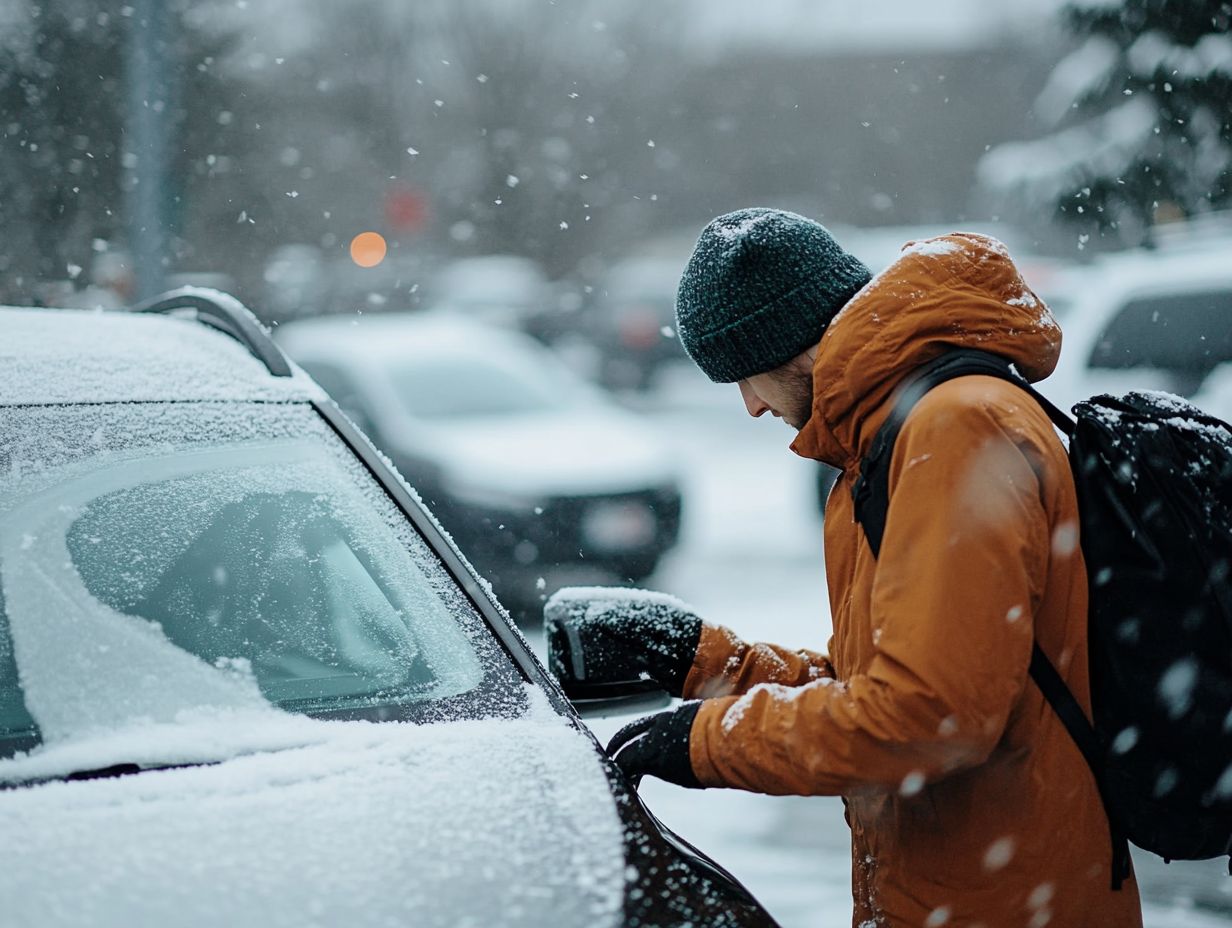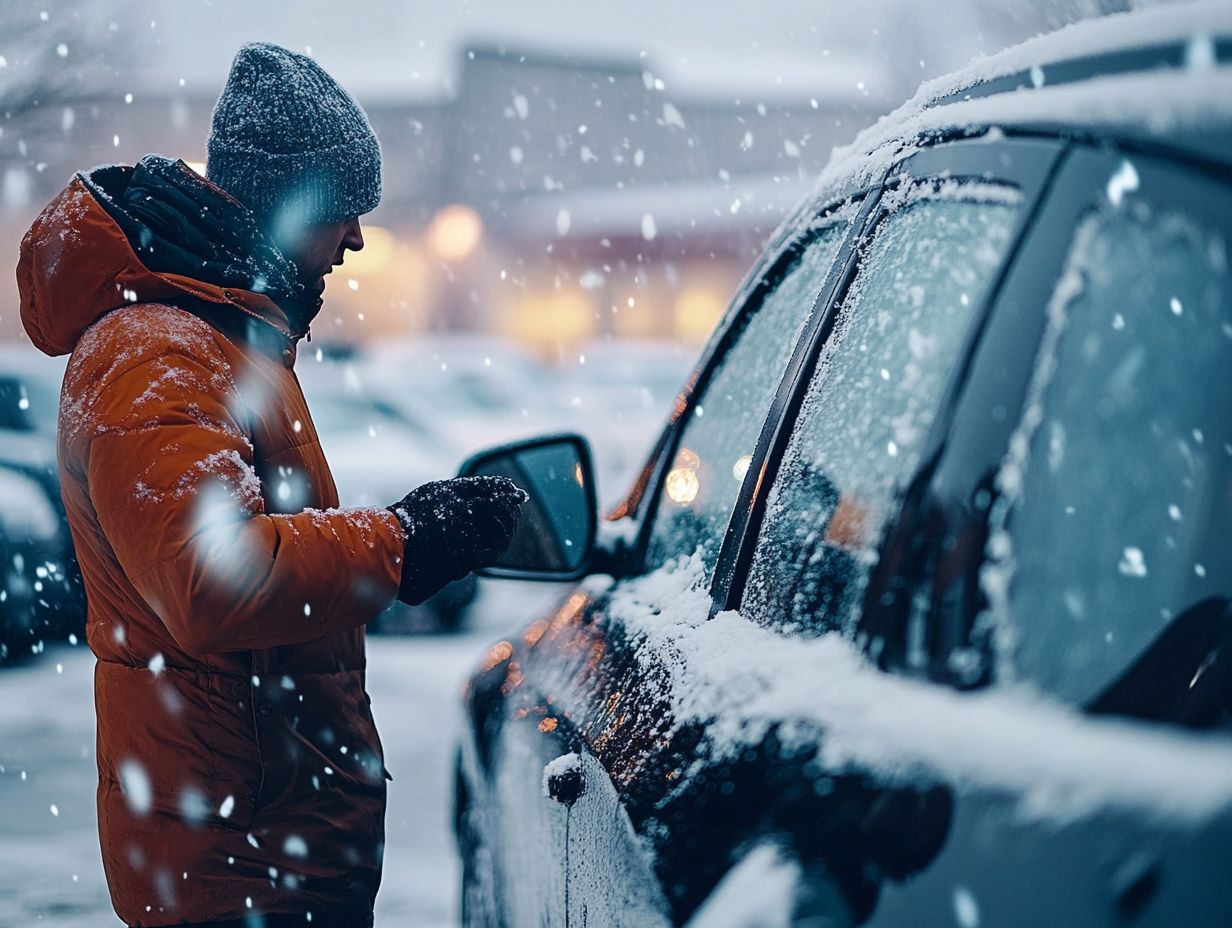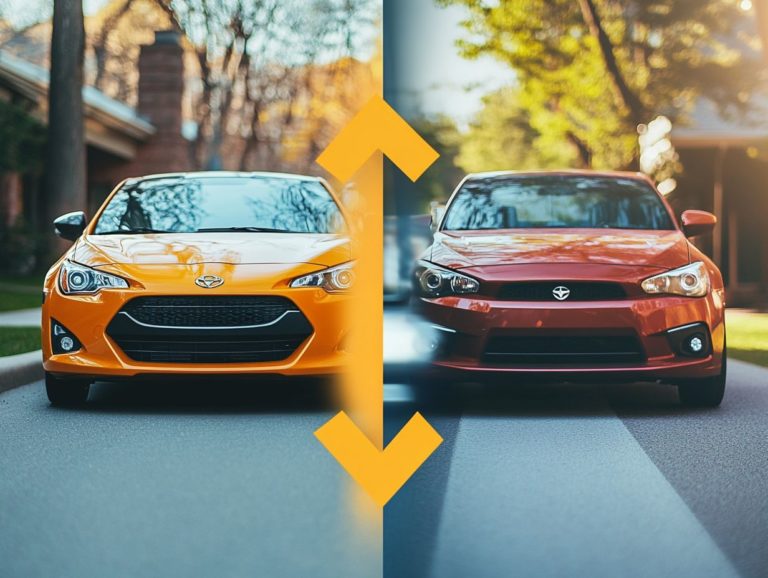Tips for Buying Used Cars in Winter
Winter is a great time for smart car buyers. Fewer shoppers mean better deals and more room to negotiate.
When buying a used car in winter, think about how the cold affects vehicle performance. This guide has everything you need to make a smart choice.
Check out important features for winter driving and tips for a solid purchase. Let’s get you the best deal this winter!
Contents
- Key Takeaways:
- Why Winter is a Great Time to Buy
- Factors to Consider When Buying a Used Car in Winter
- Where to Look for Used Cars in Winter
- Important Features to Look for in a Used Car for Winter
- Tips for Negotiating and Inspecting a Used Car in Winter
- Frequently Asked Questions
- What are some tips for buying used cars in winter?
- Is it better to buy a used car in winter compared to other seasons?
- Should I consider purchasing a winter-specific vehicle?
- How can I ensure I am getting a good deal on a used car in winter?
- Are there any specific features I should look for when buying a used car in winter?
- What are some potential risks of buying a used car in winter?
Key Takeaways:

- Consider the weather and road conditions when buying a used car in winter to ensure it can handle harsh conditions.
- Look for features like all-wheel drive and heated seats in a used car for winter to improve safety and comfort.
- Use negotiation strategies and a winter-specific inspection checklist to ensure you get the best deal on a used car in winter.
Why Winter is a Great Time to Buy
Buying a car in winter has its perks. Many dealerships want to meet their sales goals, so they offer enticing end-of-year deals and winter incentives.
As the year draws to a close, many dealerships work to clear out older inventory. This leads to less crowded showrooms and significant potential for price reductions. This pressure gives you the power to negotiate effectively, especially for winter-ready features like heated seats and snow tires, ensuring you drive away with a fantastic deal.
Factors to Consider When Buying a Used Car in Winter
When you think about purchasing a used vehicle during the winter months, many factors demand your attention. The weather and road conditions prevalent in this season can influence both the vehicle’s performance and your financial considerations.
It s crucial to verify that the used car you select is well-equipped to navigate winter elements. This decision can profoundly affect its durability and your overall satisfaction with your investment.
Weather and Road Conditions
Snow and ice can change your buying decision. Look for features like snow tires and all-wheel drive to keep you safe.
These elements can drastically impair traction, making it essential for you to seek such features. Snow tires enhance grip on slippery roads, while all-wheel drive offers that extra layer of stability and control.
When evaluating a used vehicle, check for signs of existing tire wear, scrutinize the condition of the brakes, and inquire about the vehicle’s maintenance history.
Also, ensure that the heating and defrosting systems are in excellent working order to maintain both visibility and comfort during those frigid months.
Budget and Financing Options
Set a budget and explore financing options before you buy. Keep an eye on end-of-year sales to save money.
Beyond the initial purchase price, be sure to account for additional expenses that can impact overall affordability. A realistic budget should include costs like maintenance coverage and vehicle protection plans, both vital for ensuring long-term satisfaction with your investment.
Familiarize yourself with various financing options, including those offered by banks like Capital One, to find terms that align with your financial situation. Utilizing resources like Kelley Blue Book can help you evaluate fair market values, allowing you to make informed decisions as you navigate the complexities of the car-buying journey.
Where to Look for Used Cars in Winter

Finding the perfect used car during the winter season requires exploring various avenues. You can explore online marketplaces, visit reputable dealerships, or browse local classifieds and auctions.
Each channel offers distinct advantages and potential savings, allowing you to maximize your search and make a well-informed decision.
Online Marketplaces and Dealerships
Online marketplaces and local dealerships present two primary pathways for acquiring a used vehicle, especially during the winter season when inventory can fluctuate considerably.
While each method has its own advantages, your choice ultimately depends on your personal preferences and priorities.
Online platforms provide a vast selection and unparalleled convenience, allowing you to compare various options from the comfort of your home.
On the other hand, visiting dealerships offers a hands-on experience, enabling you to inspect vehicles in person and receive immediate customer service.
Consulting consumer reports is wise because it helps you assess the reliability and performance of specific models.
When considering your options, remember the importance of winter-specific features, such as enhanced traction control or all-wheel drive, which can significantly improve safety and performance during the colder months.
Local Classifieds and Auctions
Local classifieds and auctions offer exceptional opportunities for buyers seeking used vehicles during the winter season, often at prices that can significantly undercut traditional dealerships.
These platforms showcase a diverse array of vehicles and allow you to negotiate directly with sellers, enhancing your overall purchasing experience.
As you explore these options, evaluate the quality of the vehicles by carefully reviewing detailed descriptions, checking for maintenance records, and scrutinizing high-resolution photographs.
Staying alert to common pitfalls, such as hidden fees or misleading representations, is crucial. Conduct thorough due diligence by:
- Arranging inspections and test drives
- Ensuring the vehicle meets your specific requirements
- Verifying that proper documentation is in place
This meticulous approach leads to more informed and satisfying purchases.
Important Features to Look for in a Used Car for Winter
When you’re in the market for a used vehicle tailored for winter driving, it s crucial to focus on features that enhance both safety and comfort.
Look for all-wheel drive, traction control, heated seats, and remote start systems. These elements are essential for ensuring a secure and enjoyable driving experience during the colder months.
All-Wheel Drive and Traction Control
When looking for a used vehicle to tackle the winter, all-wheel drive and traction control are essential features. These systems dramatically improve stability and handling on slippery roads.
They work by automatically distributing power to all four wheels, ensuring you have enhanced grip and control while navigating snowy or icy surfaces.
In an all-wheel drive vehicle, sensors continuously monitor wheel speed and adjust power as needed, helping prevent slipping and boosting traction when it matters most. This capability is invaluable during sudden stops or sharp turns, where skidding can pose serious risks.
Vehicles like the Subaru Outback and Audi Q5 exemplify winter performance, boasting advanced all-wheel drive technology and traction control systems that maintain safety and stability.
With these vehicles, you can drive with confidence, even in the harshest winter conditions.
Don’t miss out on the chance to find your ideal winter-ready used car!
Heated Seats and Remote Start

Heated seats and remote start systems are invaluable comfort features to seek in a used vehicle during winter. They help you tackle the chill effortlessly as you start your day.
They allow you to step into a warm cabin without braving the cold for even a moment longer. Pre-warming your car makes your daily drive more comfortable and enhances efficiency, allowing quicker defrosting of windshields and better visibility in bad weather.
As these features gain popularity, they can significantly boost your vehicle’s resale value. Choosing a vehicle with heated elements and remote start can transform your driving experience throughout winter!
Tips for Negotiating and Inspecting a Used Car in Winter
When negotiating and inspecting a used vehicle during winter, arm yourself with strategies tailored to this season. This will help you secure the best deal while ensuring you drive away in a quality vehicle.
Negotiation Strategies and Red Flags
Using effective negotiation strategies when buying a used vehicle in winter can significantly impact the final price. Being aware of key red flags can save you potential regrets.
In colder months, vehicle prices often drop due to decreased demand, creating a prime opportunity for savvy shoppers. Leverage the seasonal market conditions there s usually ample inventory, and many sellers want to move their cars before the year ends.
Keep an eye out for warning signs. Unusually low prices might indicate underlying issues, and pressure tactics could suggest a seller is desperate to offload a problematic vehicle. A thorough inspection and verifying the vehicle s history are instrumental in making a well-informed decision.
Winter-Specific Inspection Checklist
A winter-specific inspection checklist is essential when considering a used vehicle. It ensures the car is equipped to handle the challenges of winter driving.
This detailed assessment can significantly impact both the safety and performance of the vehicle in harsh conditions, making diligence crucial.
Pay attention to critical components like the tires; they must have sufficient tread depth, which refers to the grooves in the tire that help maintain traction on icy roads. The battery’s health is equally important since cold temperatures can drastically reduce its capacity and lead to starting issues.
A meticulous inspection of the heating system ensures the interior remains cozy and prevents windows from fogging, enhancing visibility. Each of these factors plays a crucial role in guaranteeing a reliable and safe driving experience throughout the winter months.
Frequently Asked Questions
What are some tips for buying used cars in winter?

- Do your research beforehand and know what type of car you want, as well as its average price range.
- Check the car’s history report to ensure it has not been in any major accidents or had significant mechanical issues.
- Inspect the car thoroughly for rust, especially on the undercarriage, as winter weather can cause damage to the body.
- Test drive the car in winter conditions to see how it handles and if there are any potential issues with starting or handling in the snow.
- Consider purchasing from a reputable dealer rather than a private seller, as they may offer warranties or guarantees for the car.
- Negotiate the price based on the car’s condition, age, and any potential repairs due to winter wear and tear.
Wondering how to find the best winter used car deals? Start your winter car shopping today!
Is it better to buy a used car in winter compared to other seasons?
Your location and the type of car matter. Winter might have lower demand in some areas, leading to better prices! However, winter weather can affect a used car s condition. Always inspect and test drive before buying.
Should I consider purchasing a winter-specific vehicle?
If you face harsh winters, think about getting an all-wheel-drive or four-wheel-drive car. These vehicles offer better traction in snow but can be pricier. If you have winter tires on a regular vehicle, you might not need to spend extra.
How can I ensure I am getting a good deal on a used car in winter?
To get a good deal, compare prices of similar cars nearby. Always get a vehicle history report and have a trusted mechanic inspect the car! If a deal seems off, don t hesitate to negotiate or walk away.
Are there any specific features I should look for when buying a used car in winter?
Consider features like heated seats, all-wheel drive, and a remote starter. These can make winter driving more comfortable and improve handling in tough conditions!
What are some potential risks of buying a used car in winter?
Watch out for hidden damage from winter weather and possible repairs needed for wear and tear. Always inspect and test drive the car carefully. Factor in potential repair costs when negotiating the price!






